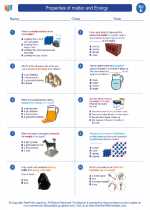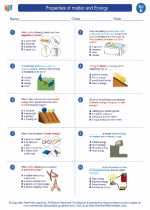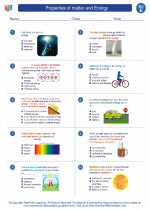Properties of matter and Energy -> convection
Convection
Convection is the transfer of heat through the movement of a fluid (such as a gas or liquid). This transfer of heat occurs as the fluid moves from one place to another, carrying heat energy with it.
How Convection Works
Convection occurs in fluids because the fluid particles can move freely. When a fluid is heated, the particles gain energy and move faster, causing the fluid to expand and become less dense. As a result, the heated fluid rises, carrying heat energy with it. At the same time, cooler, denser fluid moves in to replace the rising warm fluid, creating a continuous cycle.
Examples of Convection
Convection can be observed in various natural phenomena and everyday situations. Some examples include:
- Heating a pot of water on a stove: As the water at the bottom of the pot is heated, it becomes less dense and rises, while cooler water moves in to take its place.
- Sea and land breezes: During the day, the land heats up faster than the sea, causing the air above the land to rise and creating a breeze as cooler air from the sea moves in to replace it.
- Atmospheric convection: The movement of air in the atmosphere due to temperature differences, leading to the formation of weather systems such as thunderstorms and hurricanes.
Study Guide
To better understand convection, here are some key points to focus on:
- Understand the concept of convection and how it differs from conduction and radiation.
- Learn about the factors that influence convection, such as temperature differences and fluid properties.
- Study real-life examples of convection and how it impacts natural phenomena and human activities.
- Review the applications of convection in everyday life, such as in heating and cooling systems.
- Practice identifying convection patterns and understanding how they contribute to heat transfer in various scenarios.
[Convection] Related Worksheets and Study Guides:
.◂Science Worksheets and Study Guides Fifth Grade. Properties of matter and Energy

 Worksheet/Answer key
Worksheet/Answer key
 Worksheet/Answer key
Worksheet/Answer key
 Worksheet/Answer key
Worksheet/Answer key
 Vocabulary/Answer key
Vocabulary/Answer key
 Vocabulary/Answer key
Vocabulary/Answer key
